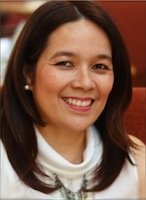Hilda Koronel Has Come Full Circle
/Hilda Koronel as Sisa
Over lunch during our recent interview, Hilda looked effortlessly fresh, her presence calm and assured. Despite the grueling shooting days she had just endured, she seemed rested, content, happy. There was a lightness to her—perhaps the ease of someone who has come full circle, who has weathered life’s storms and emerged with a quiet kind of grace.
Hilda Koronel arrived in Manila in early December, staying for three months—long enough to soak in the warmth of home, both literally and figuratively. The holidays were a whirlwind of reunions, laughter, and nostalgia. “It’s always so festive here, everything is lit up, and I missed that in the U.S.,” she said, recalling nights spent with childhood friends and retired Los Angeles acquaintances who took her to Tagaytay.
She had not been back for a film since The Mistress 13 years ago, and that lifetime of distance made her return all the more meaningful. “I love it here. Manila will always be home for me.”
The project that drew her back was Sisa, a film requiring both emotional depth and physical endurance. “They presented the story to me so well. They revised it four times before I finally said yes. Maganda talaga yung story (The story was really good). It has drama, of course—that’s what I normally do—but this one is different. Medyo naaiba (Quite different).”
Playing Sisa was no easy feat. “She was a fighter. Her family was decimated, but she kept going. She had a single-minded purpose, using all her skills and strengths to survive. No matter what, she never gave up.”
L-R Hilda's manager Shirley Kuan, Hilda, the author and the author's husband, Mark Philbrick.
Filming proved grueling, especially under the oppressive heat of Tarlac, where the production had relocated after the original Tanay set was washed away by heavy rains. The scorching sun, the dust swirling through the air, the layers of prosthetics and period costumes—it all took a toll. “Imagine the make-up, the heavy costume, and the wig under that heat! Add to that the dust kicked up by the wind.” She would often fall ill from vertigo.
Some of the most demanding days began at midnight, with a 1 a.m. departure for the set, followed by two hours of prosthetics and makeup. “Our first shot had to catch the sunrise. The shot was stunning, but imagine climbing a hill in full costume at 4 a.m.? But it was so worth it.” Even basic necessities became a challenge. With makeshift portalets on-site, anyone needing a proper restroom had to be driven a kilometer away. “It was hard and stressful at first, but eventually, you get used to it. It was a challenge, but we made it.”
Despite the hardships, the experience was deeply rewarding. “Working with director Jun Lana was so much fun. I love working with him. He’s easy to work with, always feeding me! They really took good care of me. I’m happy and grateful that my comeback film is with them.”
Hilda rarely watches herself on-screen. “I am my worst critic. If I watch, I just keep thinking—I should have done this, I shouldn’t have done that—so I try not to.” One of the toughest scenes she filmed was a confrontation with a commander, entirely in Spanish. “The role of the commander was recast four times, and the dialogue was long and intricate. But we got through it.”
The author and her subject
Now back in Los Angeles, she is happily reunited with her son, Diego, and her two beloved cats. “I just want to sleep as much as I can,” she laughs. But work is never far from her mind. With her manager, Shirley Kuan, she is reviewing offers. “I’m looking for something offbeat. Maybe a really good horror film,” she muses. “Let’s see what comes up. I just take it a day at a time. That’s all I can do.”
Hilda rarely watches herself on-screen. “I am my worst critic. If I watch, I just keep thinking—I should have done this, I shouldn’t have done that—so I try not to.”
Much like Sisa, Hilda has weathered life’s storms with resilience and grace. She likes to joke that she’s now Hilda 2.0, but unlike others who shy away from their age, she embraces it. “I’m only a couple of years away from my seventh decade, and I wear that proudly. Aging is a gift, after all, so we must be grateful.”
And if one can survive life’s many challenges with as much grace, beauty, and strength as she has—what a gift indeed.
First posted in Cathy Babao's Facebook page.
Cathy S. Babao, mother, author, columnist, grief educator and counselor works as a communications consultant for various multinational companies, and teaches grief education at the Ateneo de Manila University.
She has written two books, Heaven's Butterfly, a children's book on grief, and Between Loss and Forever: Filipina Mothers on the Grief Journey, a finalist for the 2011 National Book Awards.
More articles by Cathy S. Babao






